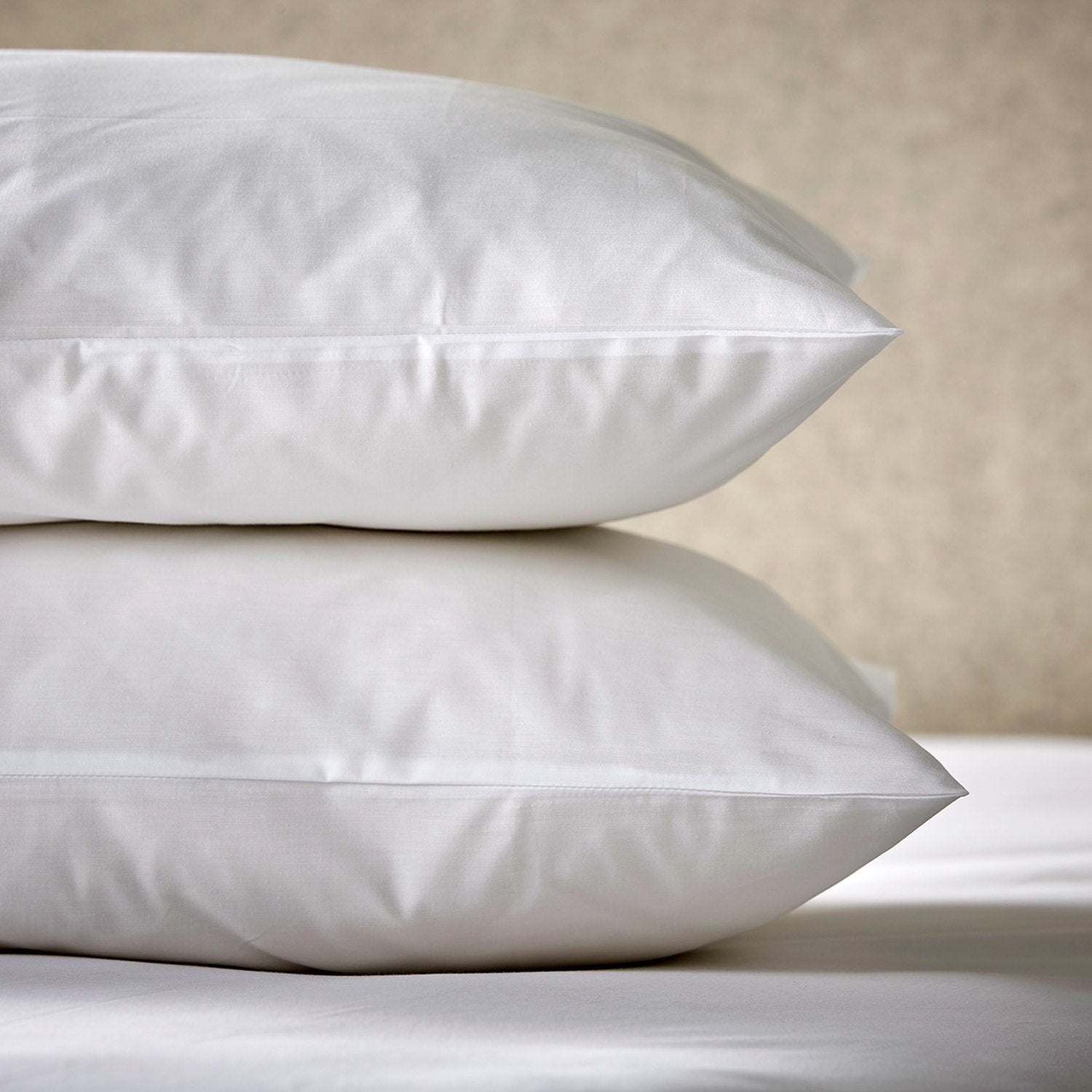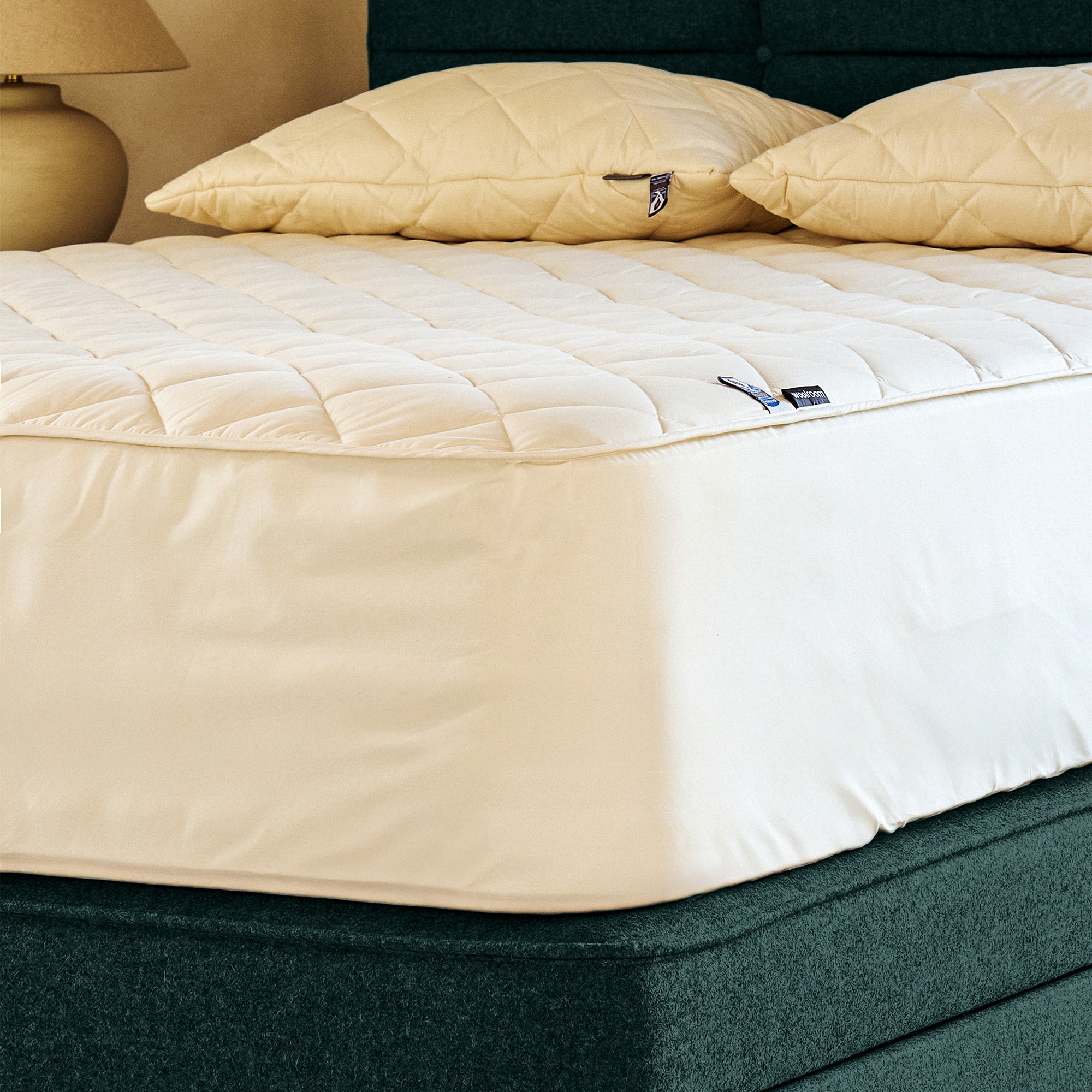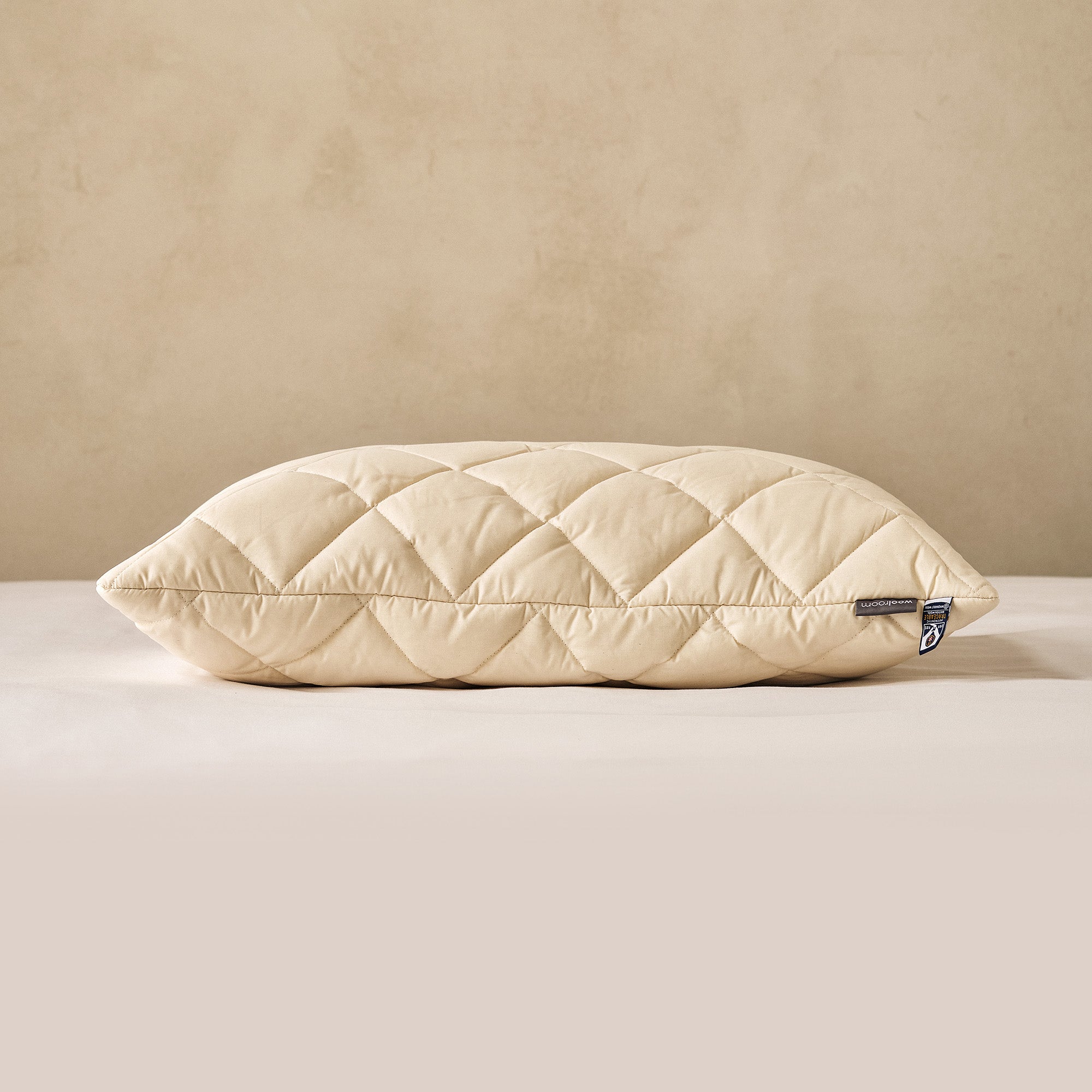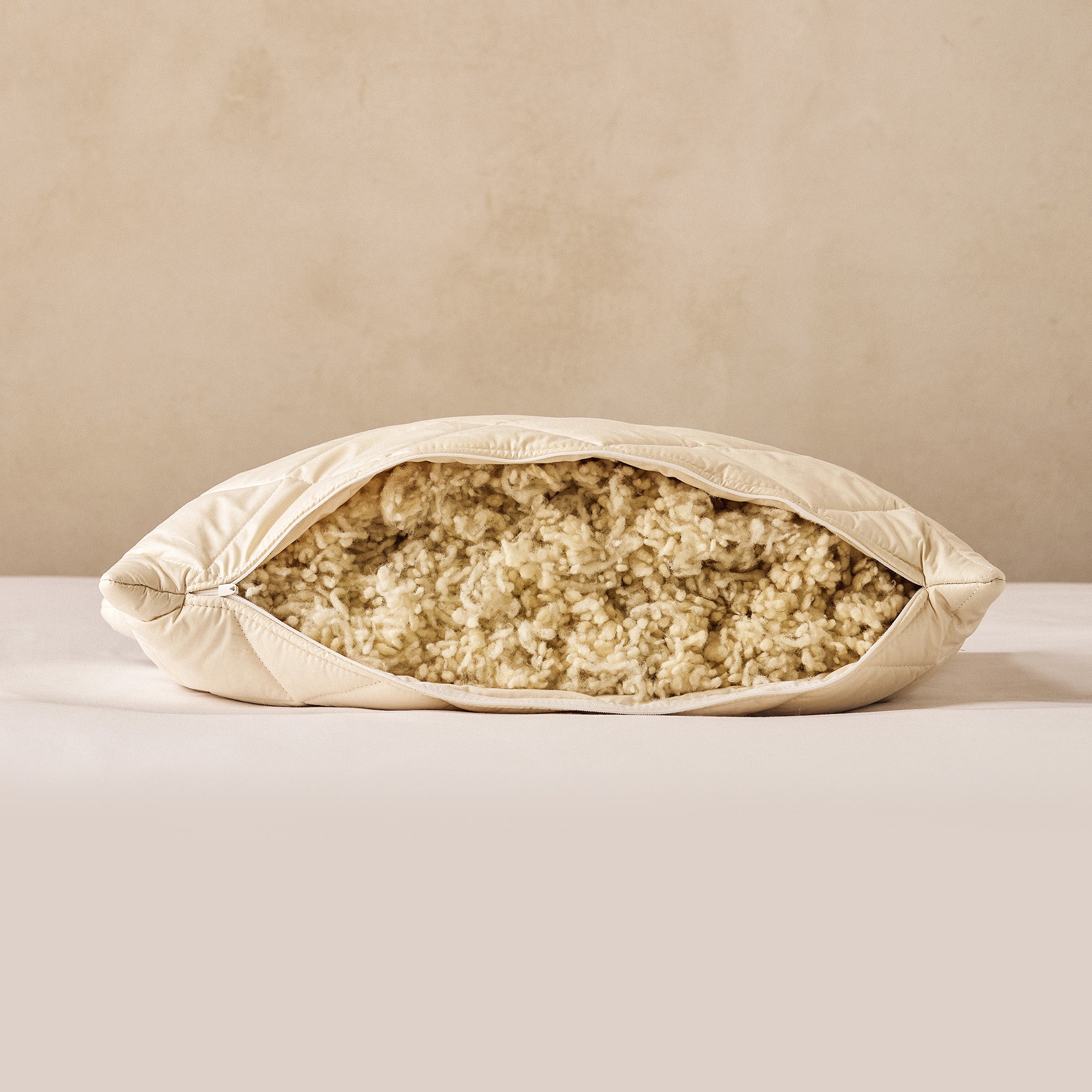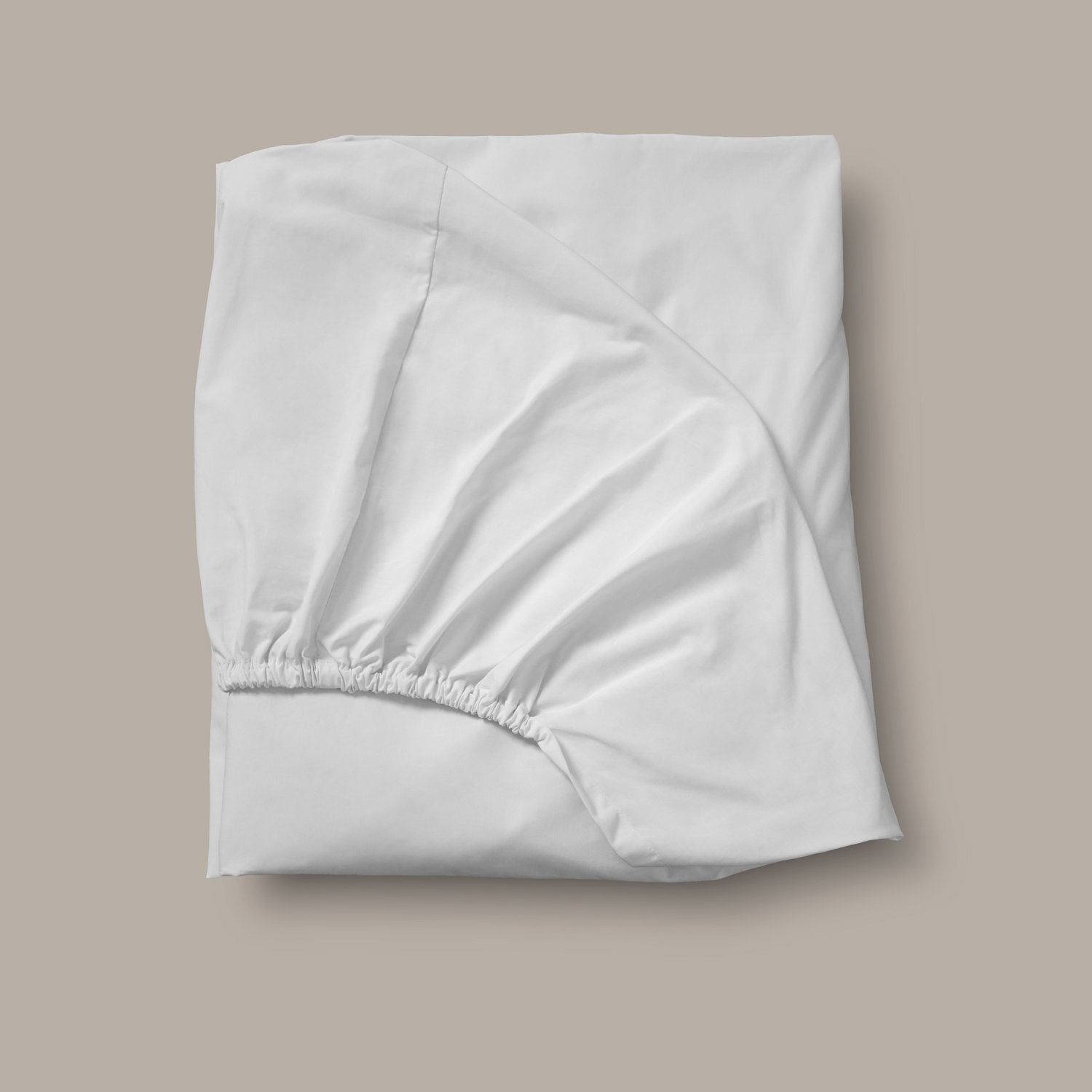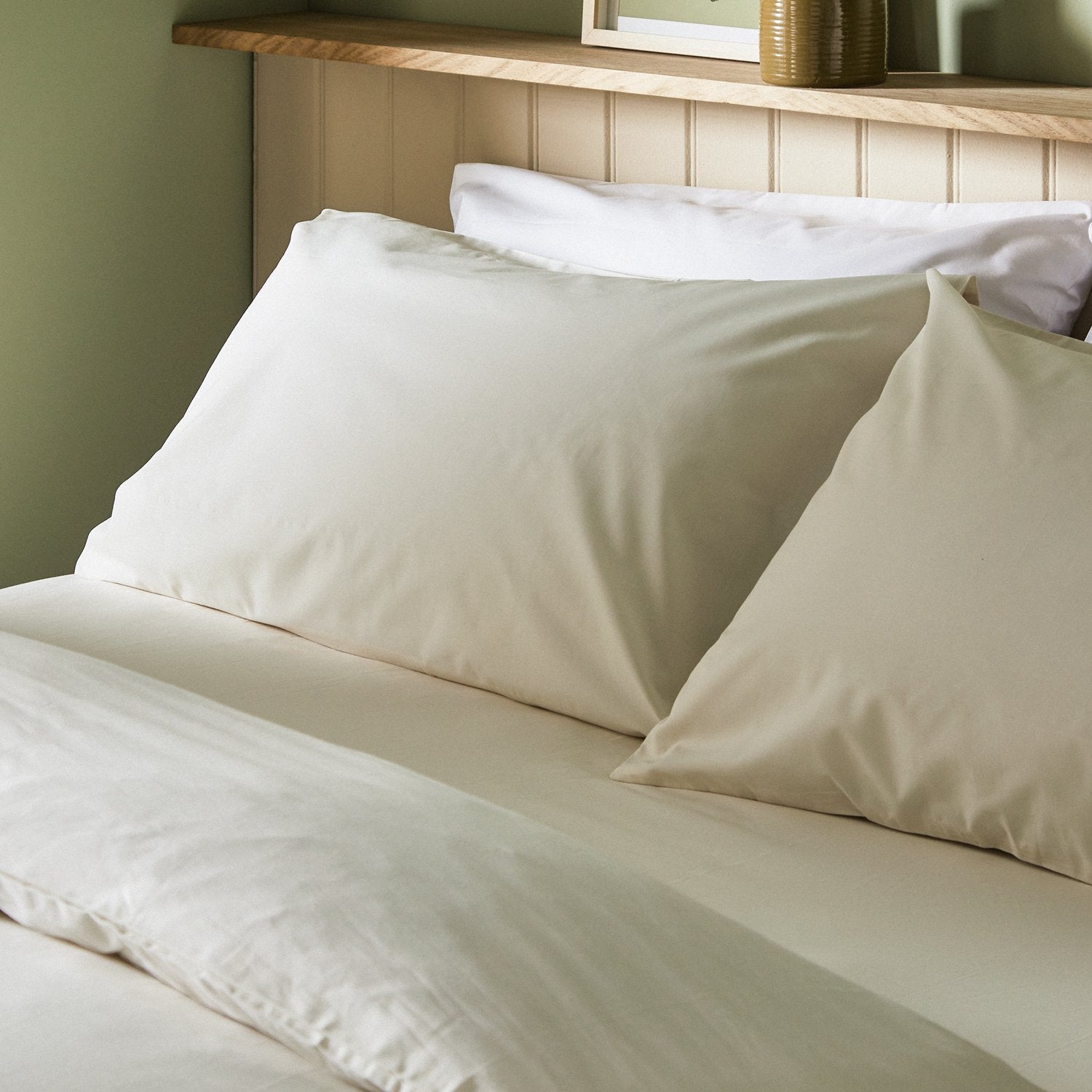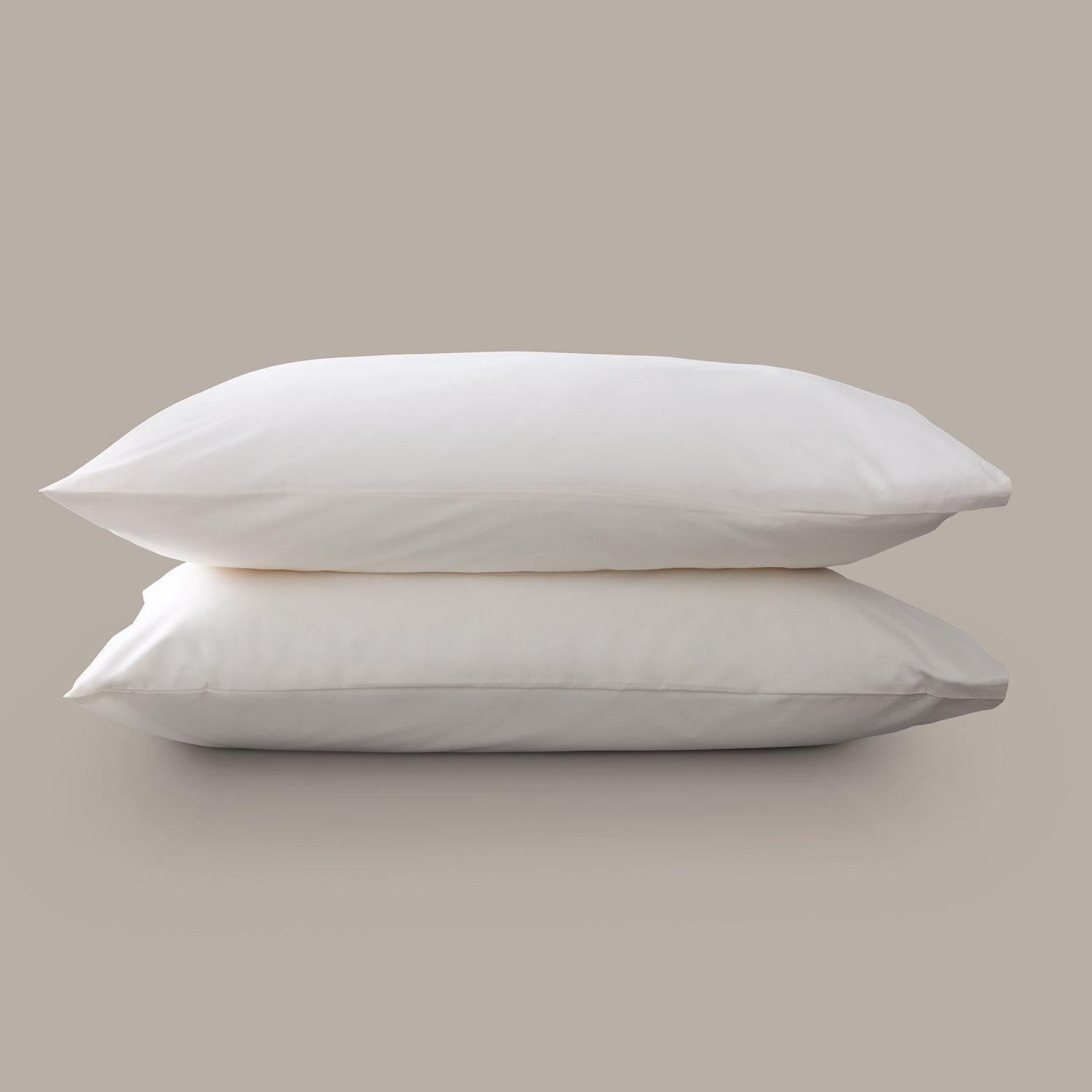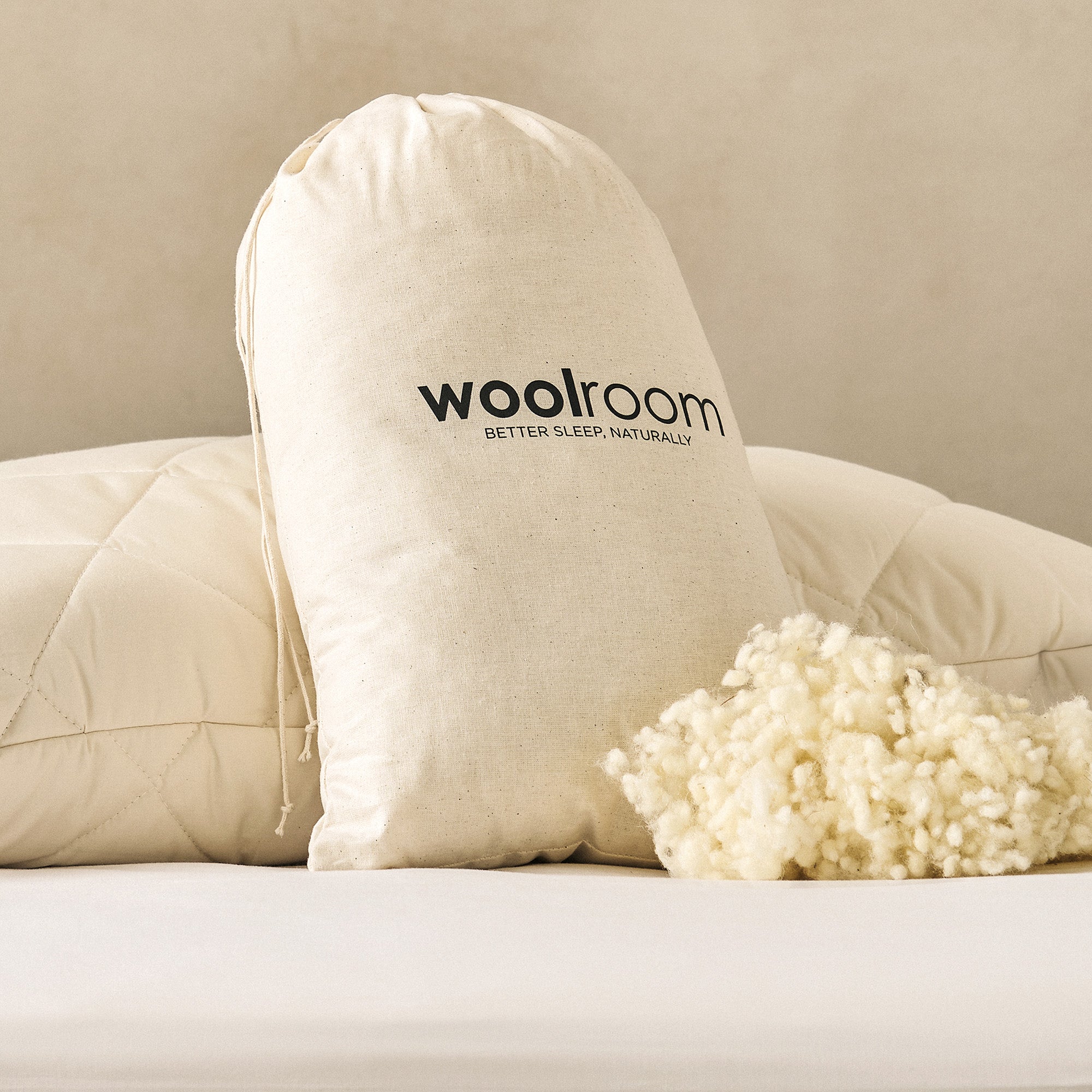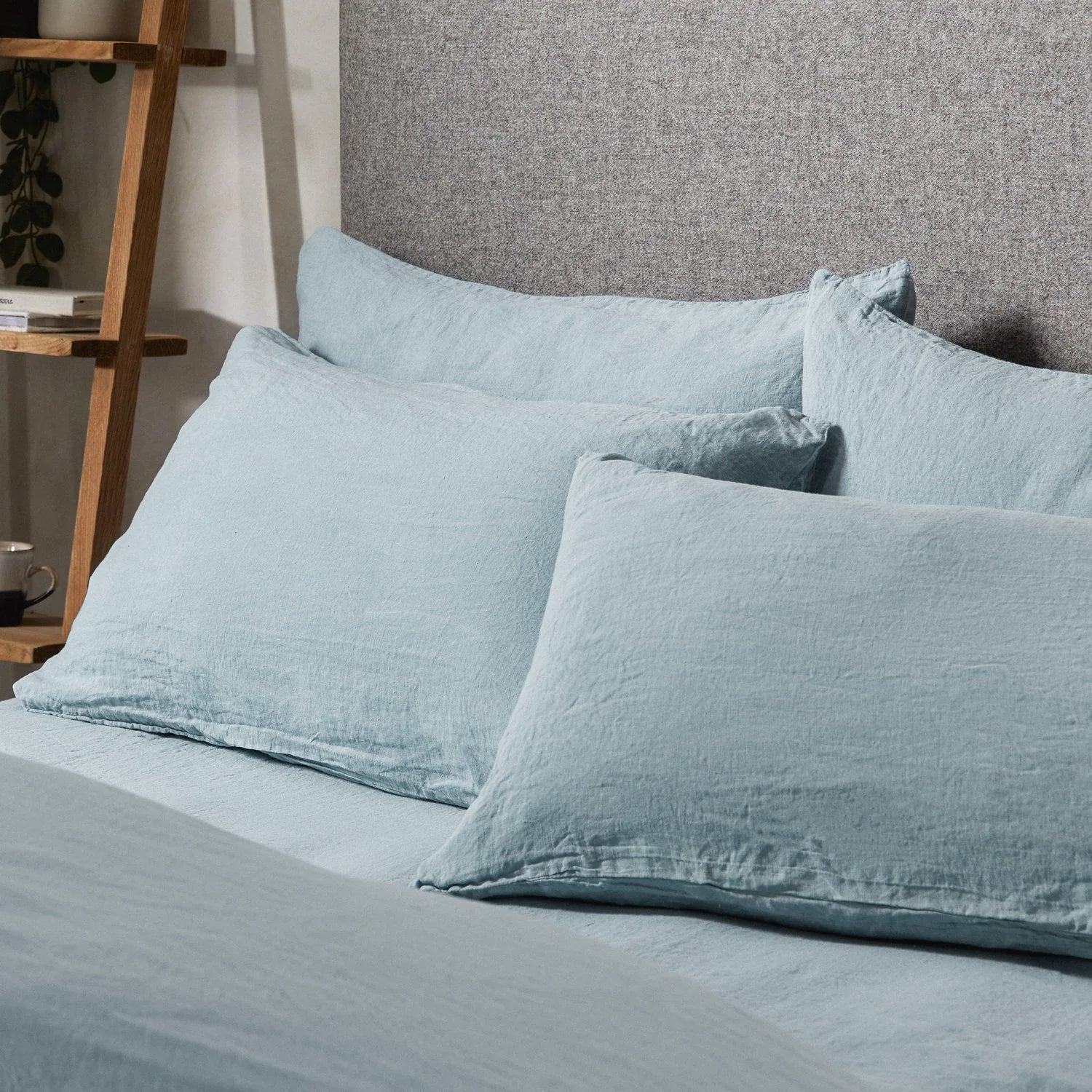Depending on where you live, you may enjoy all four seasons or just a hint of spring and fall before the heat or cold weather sets in. Either way, we all deal with fluctuations in temperature and/or humidity, and that can be problematic in the bedroom. If you’ve ever woken up shivering and groping for an extra blanket or kicked off the blankets entirely in a bid to cool down, you already know that temperature has a big effect on sleep quality. A little planning can go a long way, which is where seasonal bedding comes in. Choosing bedding based on the season helps regulate your sleep environment by accommodating changing outdoor temperatures. But what bedding do you need for each season? Here’s what to have on hand for the best chance of peaceful nights year round.
Understanding Seasonal Bedding Needs
For many of us, the shift from one season to the next is a signal to change things up around the house. In the spring, we might feel motivated for a deep cleaning so our homes feel fresh and inviting—bedding included! In the summer, the heat is a reminder to stash the heavy linens and cuddly textures for lighter, more breathable options. Colder weather and shorter, darker days in the fall and winter make cuddling up with our coziest bedding appealing. But there’s a little more to the story.
Shifts in Temperature
Managing temperature is the single most important function of your choice of bedding. As the temperatures change, so should your bedding, with the goal of maintaining a comfortable sleep temperature for the most restful sleep. It’s not rocket science—when the weather is warmer, your bedding should be lightweight and breathable, with fewer layers needed. When it’s cold, breathability is still important to avoid trapping heat, but thicker fabrics and warmer materials can help keep you cozy.
Bedding made with natural fibers, like organic wool, cotton and linen, tend to perform better year-round than their synthetic counterparts. For comfort, breathability, temperature regulation and sustainability, organic wool in particular is a standout. Surprised? Don’t be! It’s typical to associate wool with itchy socks or sweaters, but organic wool is incredibly well-suited to bedding staples like pillows, comforters and mattress toppers. As a fiber, wool is exceedingly adept at regulating temperature, which helps keep you comfortable while you sleep. The material actually “breathes” by absorbing and releasing heat, instead of trapping it and letting it build to an uncomfortable level. Instead, it provides warmth without excessive weight and allows air to circulate. Plus, wool can absorb up to 30% of its weight in moisture without becoming damp or heavy, keeping you comfortably dry. If you’re a hot sleeper prone to sweating at night or you live in a warm climate, wool is a great choice for all four seasons.
Seasonal Aesthetics
Practicality aside, aesthetics can also be a motivating factor for swapping out your bedding as the seasons change. Maybe you’re a fan of holiday-themed sheets in the winter, or springtime is when you reach for your favorite linen throw instead of your comforter. If you use the seasons to guide your decorating choices, your bedding can and should follow suit. Not only can your bed look the part, choosing bedding based on the time of year can help you stay more comfortable by aligning with the changing temperatures.
Energy Flow
There’s a lot of symbolism with the four seasons. Traditionally, spring is a time for fresh new beginnings. Summer symbolizes abundance and growth and long, lazy days. Autumn often represents transitions, gratitude and preparation for what’s ahead. Winter symbolizes stillness and rest. Each season is associated with its own energy, just like we are, and your bedding can help support that seasonal energy. After all, it’s the first thing you see in the morning and the last thing you see at night. Choosing bedding that feels seasonal—cozy and comforting or breezy and light—can help you start and end every day on the right foot.

Best Spring Bedding
The spring can be a temperamental time of year—sunny and mild one day and snowing the next. But in general, we’ve moved beyond the bitter cold of winter and warmer days are just ahead. So what kind of bedding is best in the spring?
Spring Comforters
In the spirit of spring cleaning, it’s time to pack away your heavy winter bedding for something a little lighter. A medium wool comforter is an ideal choice. Wool is naturally lightweight, but its temperature-regulating properties mean you’ll stay toasty if temperatures dip, and you shouldn’t overheat if it happens to be a warm night. At Woolroom, our organic wool comforters are naturally hypoallergenic, sustainable and ethically sourced from happy, healthy British sheep. Our medium-weight comforters are the perfect top covering when the bedroom temperature is between 60 to 70 degrees or so. Pro tip: Keep a wool throw across the foot of the bed or in a basket nearby in case you want another layer during this unpredictable season.
Spring Sheets
Depending on where you live, you may want to keep your thick sheets on your bed for a little while longer. But if you live in a warmer climate, this is a great time to swap your sheets to breathable cotton or linen options. Unlike synthetic fabrics, like polyester and rayon, these natural fibers don’t trap heat. Instead, they allow air to circulate naturally. Plus, natural fibers are a better choice for people with allergies. Springtime allergies tend to be the most severe, and you don’t need your bedding making things worse!
If you notice your allergies worsening at bedtime, it might be time to ditch theconventional foam bed for a natural wool mattress instead. Allergens like dust mites are drawn to warm, moist environments, which is exactly what you’ll find in a mattress made with synthetic materials. Wool limits allergens like dust mites, mold, mildew and pet dander, because of its innate ability to regulate temperature and wick moisture. It means a cleaner sleep environment—and far fewer allergy triggers.
Best Summer Bedding
In the long, hot days of summer, nighttime temperatures aren’t always conducive to sleep. Heavy sheets and bedding staples will only make things worse. This is the season for the lightest, breeziest fabrics and breathable fibers.
Summer Comforters
In the summer, your best bet is a lightweight wool comforter. We’ve already covered the perks of this fiber—it’s naturally breathable, regulates temperature exceptionally well and moisture wicking so you don’t wake up in a pool of your own sweat. Woolroom’s lightweight wool comforter works best in bedroom temperatures above about 72 degrees to help you maintain a comfortable sleep temperature without the heaviness of a winter-weight comforter.
Alternatively, you might skip the comforter entirely in favor of a lightweight wool bed blanket. Ambient temperatures can affect our body’s natural temperature fluctuations, which drop in preparation for sleep and begin elevating in the early part of the morning in anticipation of awakening. A lightweight comforter or blanket can help, reducing nighttime disruptions from overheating or feeling chilly. Plus, there’s a mental component to using a blanket. It actually taps into our emotional and psychological need for comfort and security, and that’s not something we should give up just because it’s hot outside.
Summer Sheets
If you haven’t already switched to organic cotton or linen sheets, now is the time. Paired with a lightweight wool comforter or wool bed blanket, these materials are breathable enough for ample airflow throughout the night. Linen in particular is also absorbent and helps wick away moisture from your body, so you don’t wake up feeling clammy or sweaty.

Best Fall Bedding
When you start seeing the leaves change and smell hints of pumpkin spice in the air, it’s time to switch to warmer bedding. Nights begin to get longer and colder, so you’ll need cozier blankets and warmer sheets.
Fall Comforters
Though it’s starting to get chilly, it’s not quite time to break out the heavy winter comforter and flannel sheets. Actually, fall bedding is a lot like spring bedding, so the medium wool comforter you used a few months ago is a great choice. You can also keep the lightweight summer comforter and just add a wool bed blanket for a little more warmth and weight. Look for one in seasonal colors or patterns to maintain the autumn vibe.
Fall Sheets
If you’re ready to dive headfirst into a cozy bed, midweight sateen sheets, linen sheets and brushed cotton sheets are all good choices. They’re soft and breathable and pair well with a wool comforter to regulate your temperature. Another great idea? Try adding a high-quality wool mattress pad. It bumps up the warmth factor and spares you from hauling out the heavy winter bedding before you need it.
Best Winter Bedding
There’s nothing cozier than snuggling up in a warm bed on a frigid winter night. And while it may be tempting to turn up your thermostat for extra warmth during the dead of winter, you can save money on your utility bills by simply switching to winter bedding.
Heavy Winter Comforters
The most important piece of winter bedding you can invest in is a heavy winter comforter. Woolroom’s heavy winter comforters are suitable for room temperatures of 48 to 60 degrees. And like all Woolroom products, they’re made with ethically sourced wool so you can feel good about cozying up. Winter is a prime time for layering, so finish your bedding with a wool bed blanket or throw.
Winter Sheets
The same rules apply to winter sheets—comfort, breathability and sustainability—but depending on how cold it gets in your neck of the woods, you may need thicker, more insulating materials to stay comfortable. Flannel is the classic winter sheet, but thicker cotton weaves also tend to perform well. It’s best to avoid synthetic materials like microfiber. They’re often soft to the touch, but they don’t breathe well, which is going to trap body heat and make you sweat.

Maintaining and Caring for Your Wool Bedding
Wool is naturally resistant to allergens and irritants, but wool bedding should be aired regularly to help it stay fresh. Fortunately, it’s pretty easy. When you’re switching out wool comforters to accommodate changing outdoor temperatures, fluff and air them out to help maintain their loft and softness. In the mornings, make a point of fluffing your wool pillows and comforter. If you have a wool mattress topper, rotate it regularly to help maintain its shape and longevity.
Minor stains can be spot treated with a damp cloth and wool-safe detergent. Blot gently (don’t rub) to lift the stain. Wool is naturally resistant to dirt and odors, but at Woolroom, we’re proud to offer washable wool bedding. If washing is necessary, use a wool or delicate cycle with cool water and a mild, wool-safe detergent. We recommend line drying.
Why Choose Woolroom for Your Seasonal Bedding
Woolroom got its start in 2008 with a commitment to creating the highest-quality wool bedding in the most responsible, sustainable way possible. We only partner with British farms that abide by the five freedoms in the UK Animal Welfare Act of 2006, and our Wool ID traceability program tells you everything you need to know about the people, places and sheep behind our products.
By itself, wool is renewable and biodegradable. But to make it sustainable, ethical and hypoallergenic, how it’s harvested and processed matters. Beyond partnering with farmers whose values align with our own, our manufacturing processes are based on 150 years of experience and entirely free of chemical treatments. It’s our way of ensuring the cleanest, safest wool. We know first-hand that the best seasonal bedding starts with the best quality wool, and that means no cutting corners—ever.
There’s a lot to be said for taking your cue from Mother Nature. Seasonal bedding factors for changing temperatures in the pursuit of a better night’s sleep. And here at Woolroom, where our goal is the best wool bedding you can buy, we can say the same.



